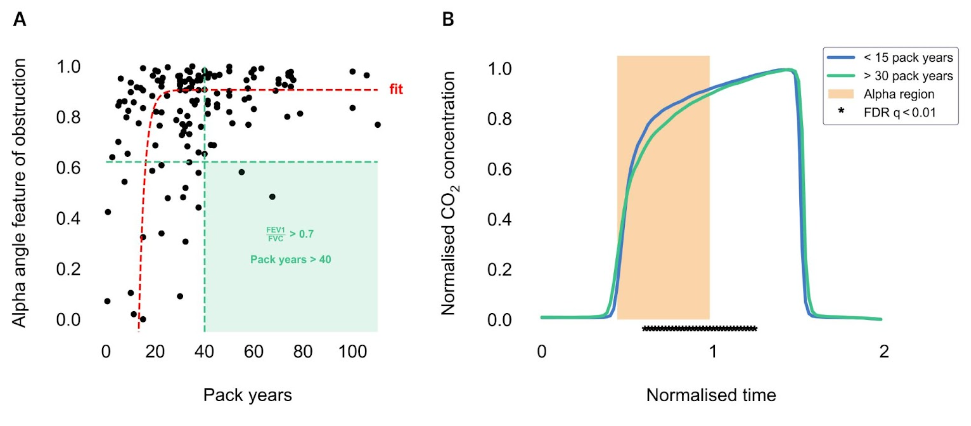Abstract
Introduction
The dose-response relationship between cumulative tobacco smoking and the severity of airways obstruction in COPD is difficult to characterise using non-specific methods such as spirometry.
Objective
This study evaluated the relationship between smoking history and features of small/medium-sized airway obstruction in COPD subjects with fast-response capnometry using Cambridge Respiratory Innovations? N-Tidal? device.
Methods
305 COPD GOLD 3/4 subjects were recruited from three studies in the UK. Tobacco smoking data was collected at baseline; N-Tidal CO? data was collected twice daily for up to 6 weeks. The relationship between CO2 features from the expiratory upstroke and plateau phases were correlated to subjects? smoking histories.
Results
Higher smoking pack years was associated with greater curvature in the alpha-angle region, which may relate to structural airway remodelling of smaller airways. Alpha-angle features showed an irreversibly altered CO2 waveform geometry beyond 40 pack years.
Figure 1: (A) Regression plot of CO2 alpha-angle feature vs. pack years. (B) Average CO2 waveforms across subjects with <15 pack years vs. >=30 pack years smoking history.

Conclusion
N-Tidal CO2 waveform features of airway obstruction demonstrate a dose-response relationship with cumulative smoking history. The N-Tidal device may be able to directly probe airway remodelling as a result of smoking.